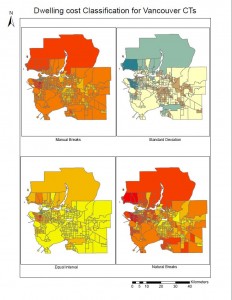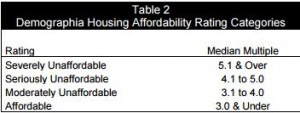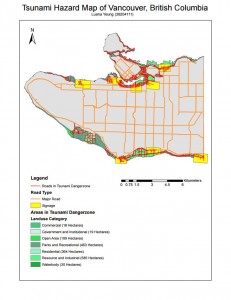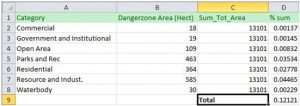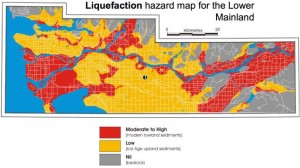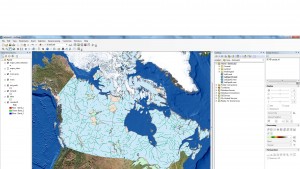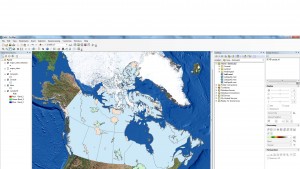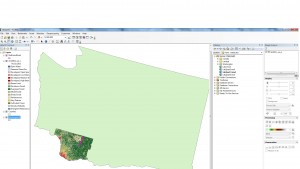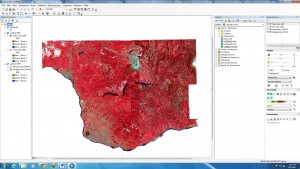Brief Summary:
The final project for this course involved downloading and managing data from various sources having to do with the Agricultural Land Reserve (ALR) in the North Okanagan and analyzing the data (slope analysis, roads, rivers etc) with tools in GIS to figure out what total proportion of land in the ALR is actually used for agriculture.
Team Organization:
Our team split up the maps by interest and voluntary basis. Once we got the data for our individual maps we grouped together to come up with a consistent colour scheme and layout for our maps. Together we wrote on the report and discussed if there were any gaps in our data analysis and interpretations. The flowchart was also a team effort as we had to put together an organized layout of processes that was involved in producing our final shapefile. Since we had flexible timetables to work on the project, we were able to work on the project together during scheduled lab times and most afternoons.
Team Contributions:
The most valuable contribution that I believe I gave the group was dedication, time and effort into figuring out what kind of commands and processes needed to be done for the analysis of our data and helping my team mates figure out how and what data needed to be extracted from our raw data. For much of the three weeks, I was in the computer lab trying to figure out ways to make the data presentable and discussing with Jose how to extract and filter out the necessary data.
Both Arron and Eric were great team mates and we worked really well to put the maps and report together. However, I did feel that Arron did put a lot of effort into figuring out what exactly needed to be filtered out the data and discussed in detail with Jose what the question was asking and how to do the more tedious tasks in ArcGIS such as closing individual polygons to create lakes and rivers etc.
Learning Outcomes:
Some interesting things I learned in the process of doing this project was that the hardest part of making a geodatabase is getting the data and organizing it in a way that is easy for you to work with in your table to contents and is also easy for someone else to understand when you send shapefiles to a team member. With all the commands and processes that go into making a final shapefile, it gets increasingly hard to be organized and keeping in mind how a third party can follow your workflow.
Some facts about the ALR include that the people who do live in the ALR region in the North Okanagan are not accounted for as the population within this district is suppressed in the census. There are not enough people living in the area (less than 2000) to be accounted for in the district, but that does not mean that they don’t count either.
Through this project I learned how to take DEM data and mosaic them into a new raster and calculate the slope from that.
In terms of teamwork, sometimes it may be difficult to be on the same page when some team members are not available to work on the project together. However, communication is key when managing a project and setting deadlines is very important.
Some issues with data management mostly had to do with organization in the geodatabases of individuals. Sometimes it isn’t clear which shapefiles are which when each individual has a different system of working with data which can make sharing sometimes difficult. It is all about being consistent and clear about the processes that you use when working with ArcGIS. Some issues also arose through the publicly available data as sometimes the resolution wasn’t always the best and we had to go through the tedious task of completing and closing individual polygons which were necessary for our analysis.
Below is the complete report of the ALR analysis of the North Okanagan Regional District complete with maps for your reference.

